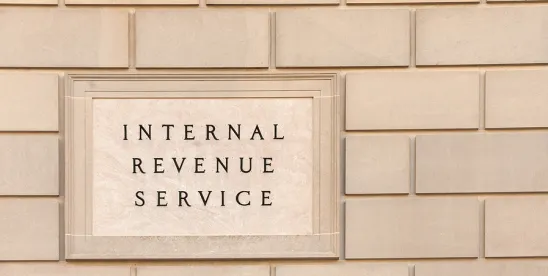No one wants to pull a notice from the Internal Revenue Service (IRS) out of their mailbox. What
few people know, though, is that the IRS’s word is not final. You have the right to appeal what
they have decided about your tax liability, including any penalties that the agency is trying to
impose on you.
Here are four tax relief strategies that Dr. Nick Oberheiden, the founding partner of the national
law firm Oberheiden P.C. and a leading tax attorney at the firm, thinks that American taxpayers
should know about before letting the IRS have its way with them.
1. Understand the Notice Letter and Check for Inaccuracies
The most basic thing that you need to understand is what, exactly, the IRS is saying about your
tax bill. Their notice letters can be confusing, with important information hidden within
disclaimers and other boilerplate language that you do not need to read. Worse, when you
realize that the IRS is saying that you owe them money, particularly when the amount is four,
five, or even six digits long, it is very easy to get emotional because of the tax burden.
You should have records of your prior taxable income returns and any payments associated with
them, whether physical or electronic. If you do not keep these records, start keeping them.
Once you have your tax records in front of you, compare the factual allegations that the IRS is
making in its notice. It is not uncommon for them to make a glaring mistake, like failing to
include tax payments that you made in the past and demanding that they be made again – this
time with a penalty and interest on top.
Fortunately, the notice will include how you can correct the IRS. Unfortunately, this means going
through their notoriously bad customer service department. Set aside at least an hour. In
addition to calling, you will also send a written request to remove the penalty from your federal
income tax liability.
2. Submit a Penalty Protest
If calling the IRS to correct the record and challenge the penalty does not work then you will
receive a rejection letter from the IRS. This officially denies your request to drop the penalty and
triggers your right to appeal the outcome.
The next step is to submit a Penalty Protest.
This is a formal, written appeal of the IRS’s refusal to drop the penalty that they are assessing. It
typically must be filed within 30 days of the rejection letter, though the rejection letter may state
a different timeframe in some cases.
Typically, the Penalty Protest form argues that there was a reasonable cause for your failure to
file your tax return or pay your tax liability in full. Reasonable cause is generally that you
exercised ordinary care to pay federal income taxes, but circumstances beyond your control
prevented you from satisfying your obligations. The IRS’s Manual Penalty Handbook lists some
of these circumstances as:
- Death
- Serious illness
- Unavoidable absence
- Fire
- Natural disaster
- Unable to obtain relevant tax records
- A mistake was made
- You relied on bad tax advice
If none of these circumstances applies to you, you can still request an appeal of the tax
deduction by explaining what happened in writing.
No matter what argument you make, you will have the burden of proving it to the IRS. The
protest letter will be analyzed by the IRS Examination or Collection Office that sent you the
penalty notice. If that Office cannot resolve the dispute, it will get forwarded to the Office of
Appeals.
3. Present Your Strongest Case at the Appeals Hearing
The Office of Appeals will schedule a conference to hear your reasons for disputing the penalty
and asking for it to be removed.
This is the last step in the process before your tax case leaves the IRS and goes through
federal court – litigation that will be time-consuming and costly if it is necessary. It is essential to
get the penalty removed at this stage, so presenting your best case for removing the penalty
during the appeals conference is crucial.
According to tax attorney and founding partner of Oberheiden P.C. Dr. Nick Oberheiden, “You
have the right to be represented by a lawyer or an accountant at this conference, and you
should exercise that right if you want to make sure that your case is heard, taken seriously, and
the penalty is removed. How you present your argument for removing the penalty, and what
your argument is, will make a huge difference. The IRS agents that conduct these conferences
– which can be done in-person, over the phone, through a video conferencing platform like
Zoom, or even through a series of written correspondences – often come into the hearing
expecting a flimsy line of argument from someone who just does not want to pay their taxes.
Bringing concrete, detailed evidence that supports your case will go a long way to a successful
outcome.”
4. You Have a Right to a Lawyer Throughout This Process
One of the most common and successful tax relief strategies is to get experienced legal
representation. They can advocate on your behalf and try to get the tax penalty removed or use
your earned income tax credit. This is often the biggest difference maker in the outcome of a
given case for two important reasons:
1. You will not have much experience going through the tax appeal process and are likely to
make mistakes, and
2. The IRS agents who hear appeals are very used to people trying to avoid paying their
taxes and will start from a position of skepticism and doubt.
By securing legal representation, you help to satisfy both of these concerns. You tap into the
experience of a skilled professional whose job it is to guide clients through this tricky, emotional,
and intimidating process, and you show the IRS that you are willing to get a lawyer to protect
your rights and property – something that most people who are trying to evade paying their
taxes do not bother to do.
Hiring a lawyer is particularly important if the amount at issue is significant. However, if the
amount is low enough that hiring a lawyer is not feasible, you may still be eligible for free or low-
cost tax professional assistance listed on the IRS’s Low Income Taxpayer Clinic List.



 />i
/>i
